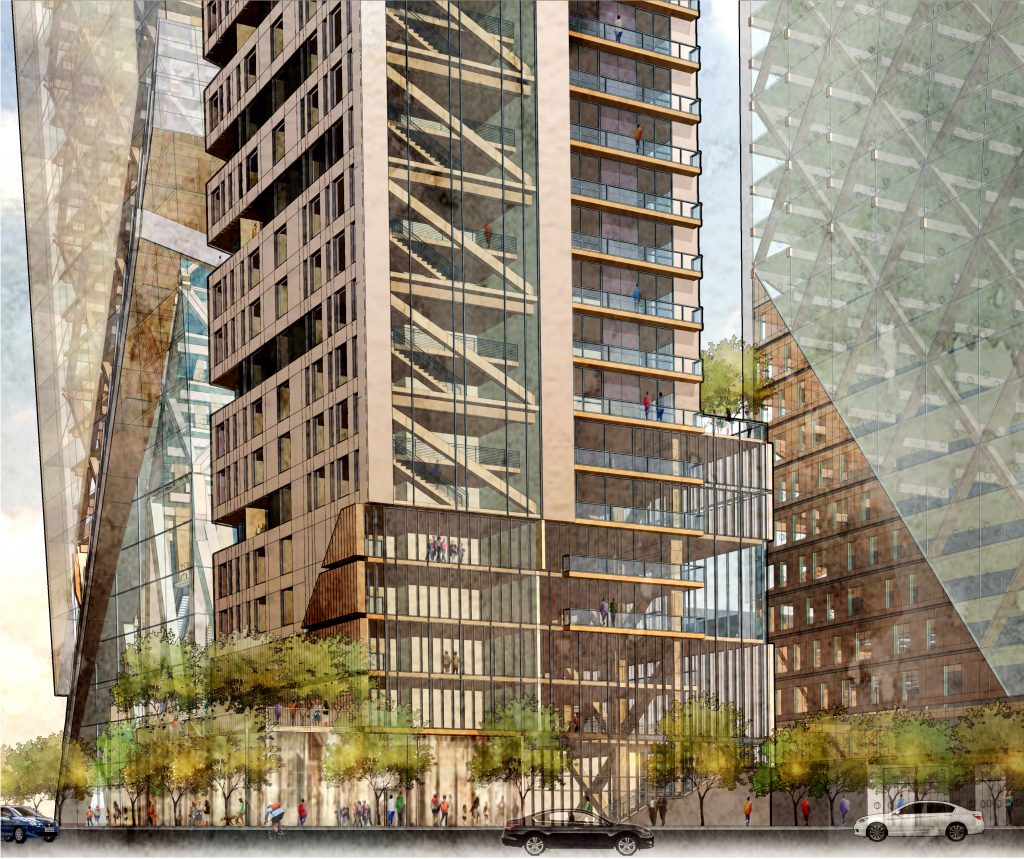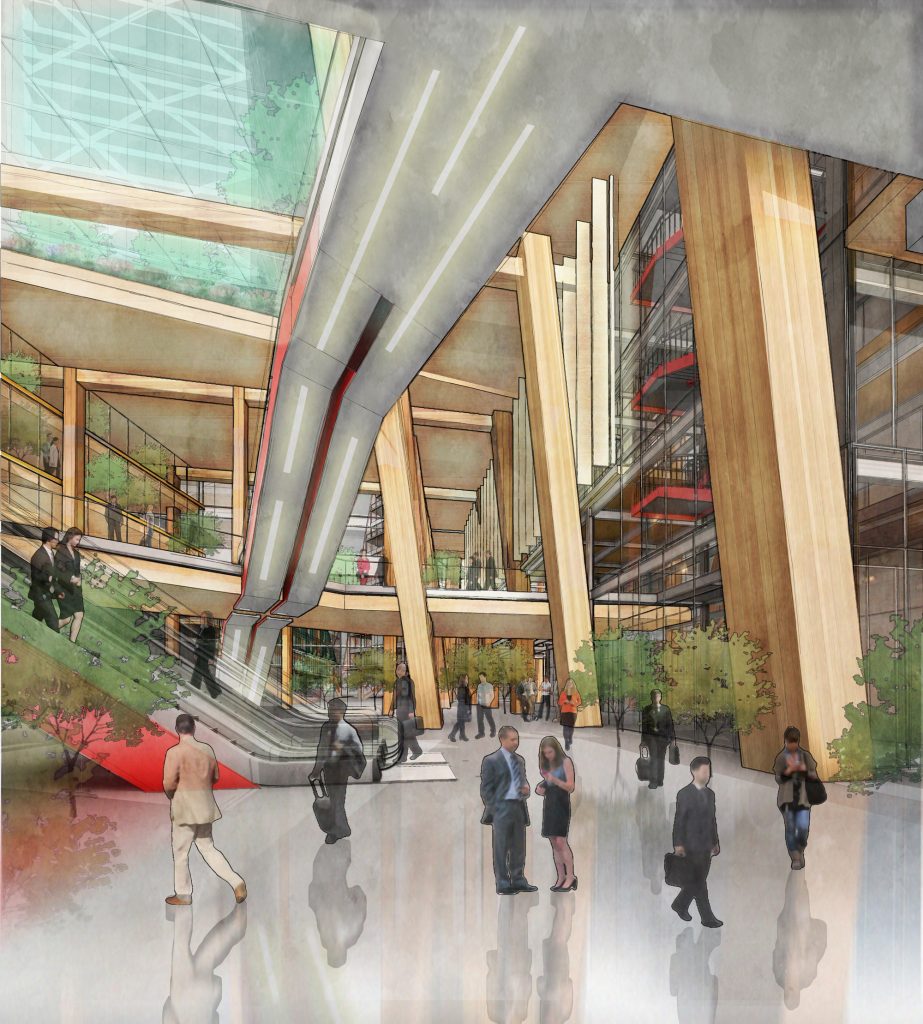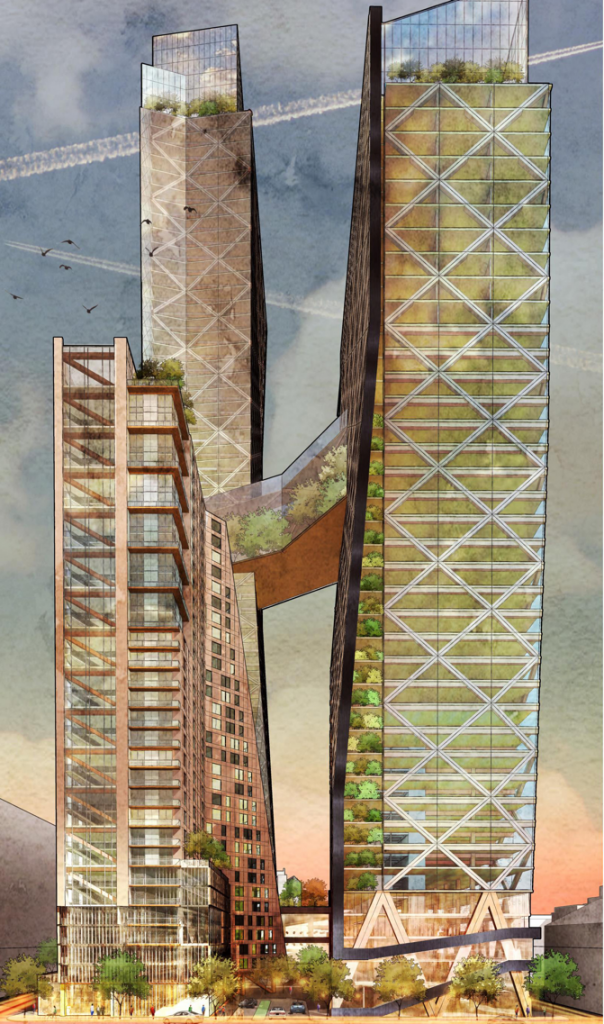Designed in response to the Skyhive Skyscraper Challenge, Timber Towers demonstrates the viability of mass timber high-rise construction. Tasked with designing a new landmark for Philadelphia’s skyline, the team used the opportunity to change the industry’s perception of wood construction by showcasing its potential on a high-profile site.
The Significance of Skyscrapers
Cities have built skyscrapers using steel and concrete for over a century. They are iconic signifiers of innovation and prosperity, and yet, the extraction of these materials has had a devastating impact on the environment. Our team believes that in an era of depleting resources and rising carbon levels, cities will turn to wood as a reliable alternative to concrete and steel in order to tackle the challenge of climate change.


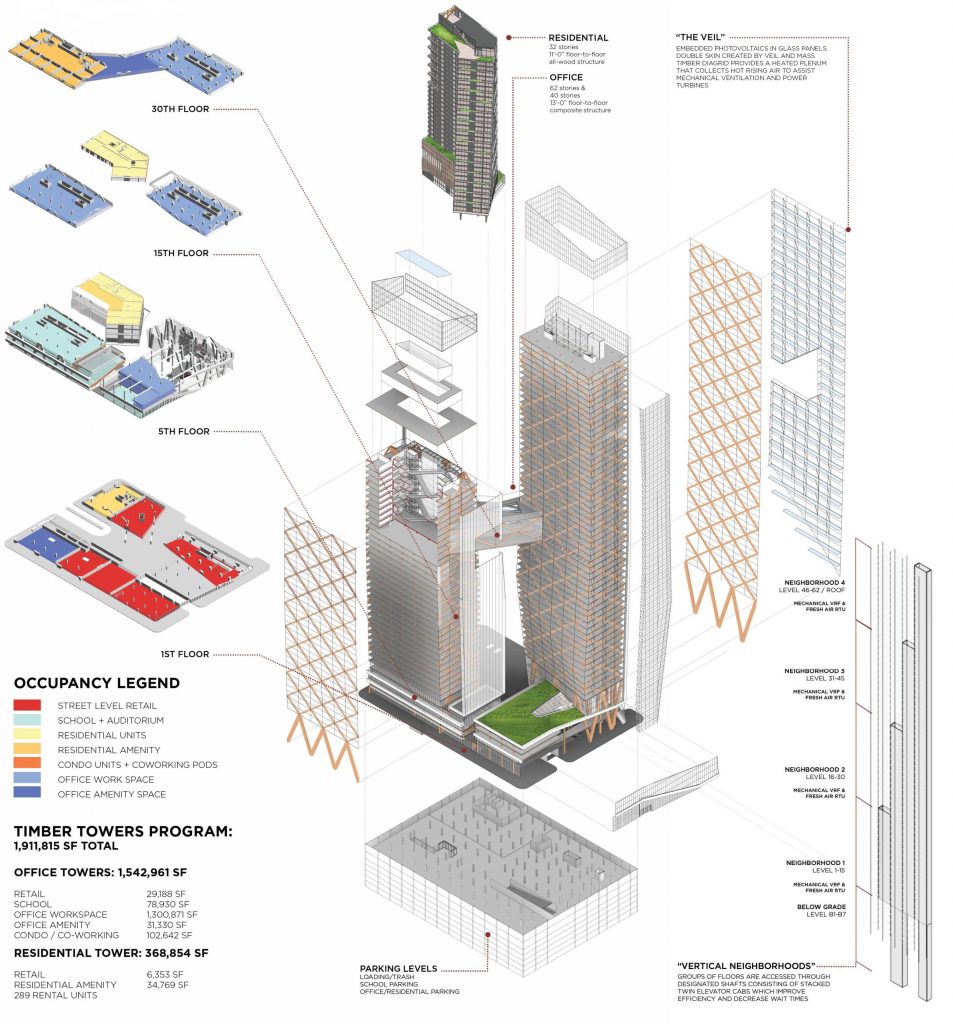
A Look Inside
Cross-laminated timber technology, coupled with innovation in vertical transportation and mechanical ventilation, provides designers with the ability create tall wood buildings that can remove carbon from the atmosphere, resulting in a biophilic work environment. Our skyscraper program consists of two office towers linked by a connecting bridge, as well as a residential tower, school, and ground-floor retail to demonstrate the compatibility of mass timber across various uses.
Why Mass Timber?
Tackling Climate Change
Climate change has been, and will continue to be, the greatest challenge this generation needs to address, caused by rising levels of carbon in the atmosphere. The construction industry alone represents 50% of the problem in the United States. A recent study by SOM concluded that mass timber projects can reduce up to 75% of carbon emissions, compared to steel and concrete. Every ton of cement also results in a ton of C02 being released into the atmosphere. By comparison, just one single tree can sequester a ton of C02 in less than 40 years. Therefore, it is essential that young trees are sustainably harvested before the end of their useful life.
Cost + Schedule
Prices vary by market, but mass timber can generally compete with steel and concrete. Because it is lighter, foundations can be 30% smaller. Mass timber buildings typically consists of prefabricated components that can easily be assembled by a smaller construction crew, in a shorter period of time. This is less disruptive to the neighborhood, and on average results in a 20% reduction in construction schedule. A 60-story office tower such as the Timber Towers could theoretically be topped off six months sooner.
Material Extraction
The extraction of materials from mines to create steel and concrete is incredibly energy intensive…steel requires 5x more energy and concrete 24x more energy than it takes to harvest a ton of timber. This mining causes deforestation and severely damages habitats and water supply, and almost half of it is actually wasted in the process. By comparison, 98% of a tree is utilized by a lumber mill for various purposes, and there is virtually no waste.
Sustainable Forestry
Cutting down more trees sure sounds counterintuitive for sustainable planning. However, wood is the only structural material with third party chain-of-custody certification process such as FSC. Several countries in tropical climates are yet to adapt this, as only 10% of forests are sustainably harvested. However, in North America, growth exceeds harvest by 40%, and forests provide enough wood for a 20-story building every 13 minutes!
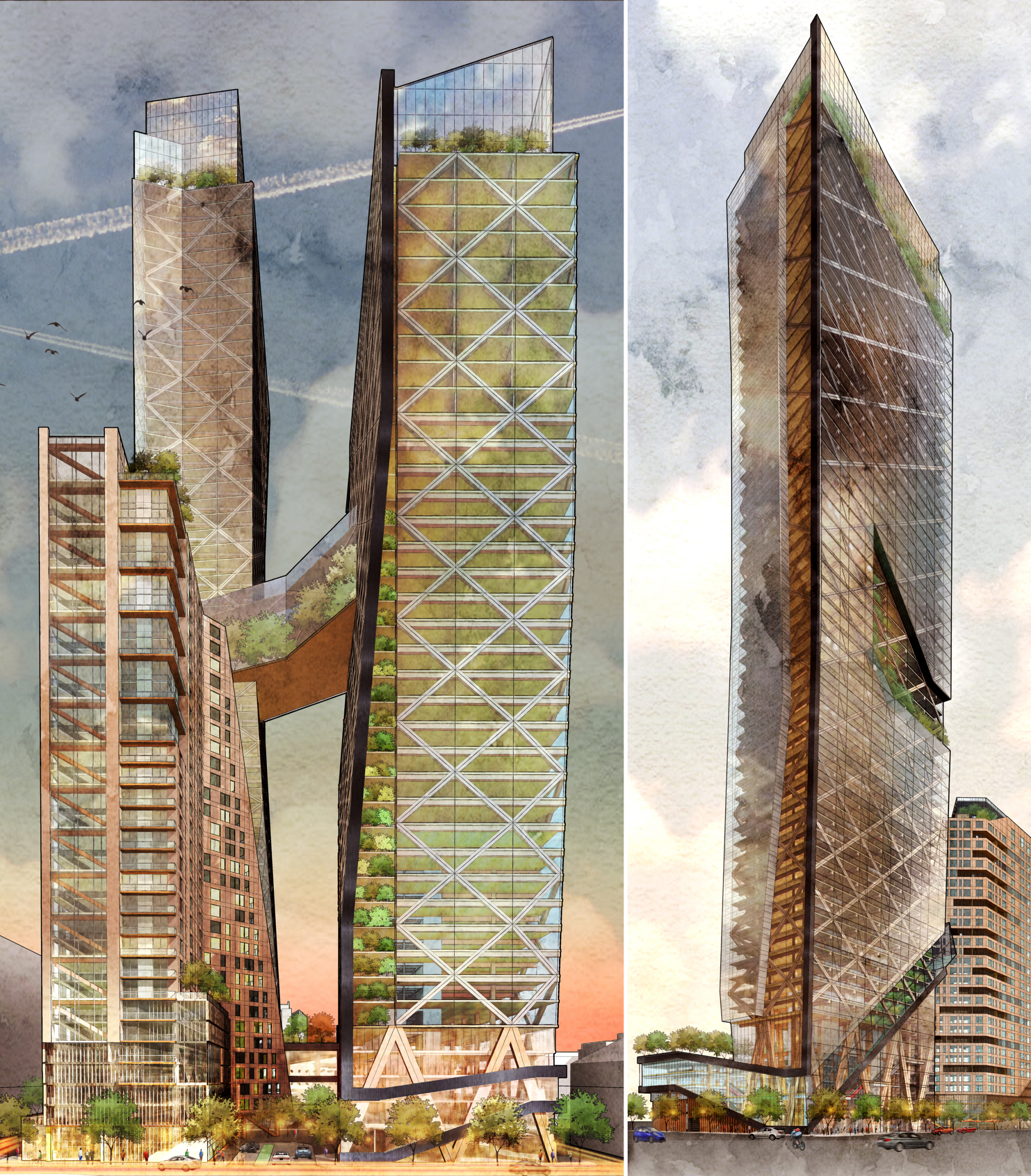
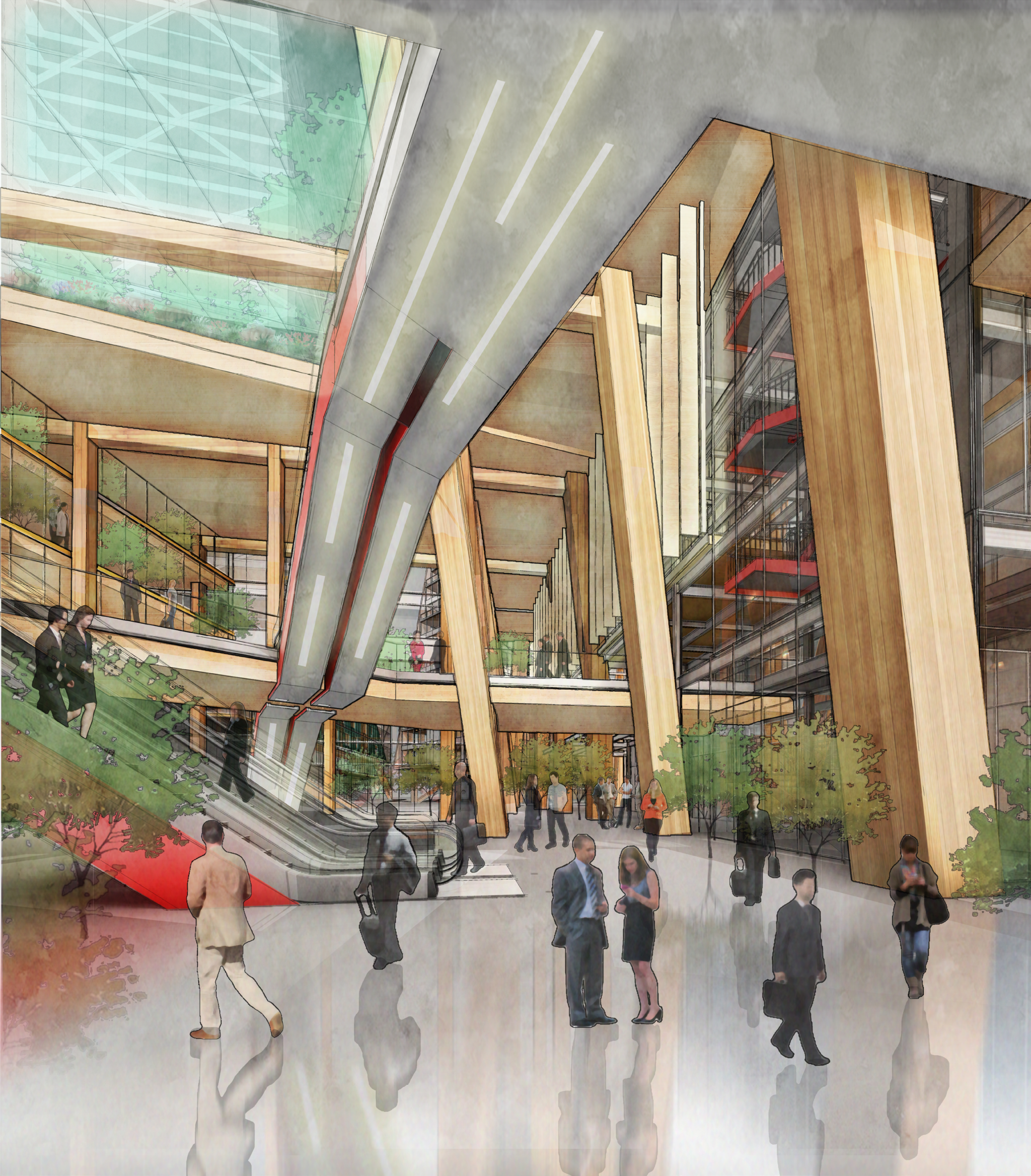
Mass Timber + People
The environmental benefits of mass timber are innumerable, but we must also remember that people are just inherently attracted to the material, and typically prefer such natural materials to steel and concrete. Architect Michael Green refers to wood as “nature’s fingerprints.” The pleasing, biophilic atmosphere of mass timber projects is tough to directly quantify for developers, but it’s certainly true that western U.S. CLT office rents are seeing premium increases of up to $10 per square foot. Factor in a city with labor as expensive as Philadelphia, and the construction cost savings are further amplified. Additionally, the thermal efficiency of wood is 15 times that of concrete, and 400 times that of steel, resulting in dramatically reduced energy bills for the fortunate end user.
While there certainly is a spirit of competitive innovation spreading to cities around the world, it’s not just about building tall out of obligation, but instead about challenging the average person’s perception about what is possible with the material of wood. Throughout our history, every significant architectural movement has followed a major structural breakthrough, and we believe that we are now on the cusp of implementing the next world-changing idea.
Calculating Carbon
According to the WoodWorks Carbon Calculator, Timber Towers contains:
• 58,761 m3 of wood products, easily replenished by North American forests in less than 3 hours.
• 73,278 metric tons of CO2 sequestered in wood.
• Emissions savings equivalent to taking 12,073 cars off the road for an entire year.
In the News
2018
Honorable Mention
SKYHIVE Skyscraper Challenge

